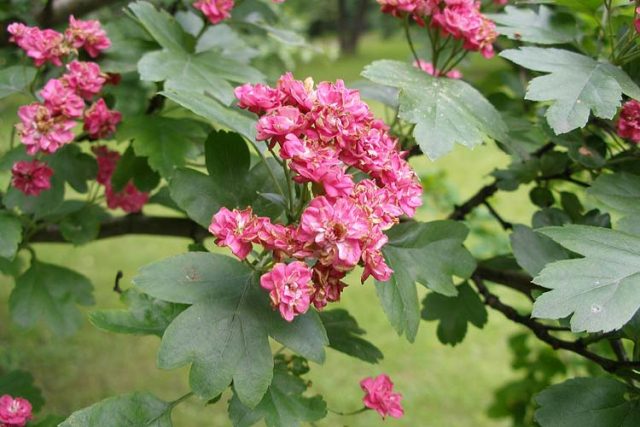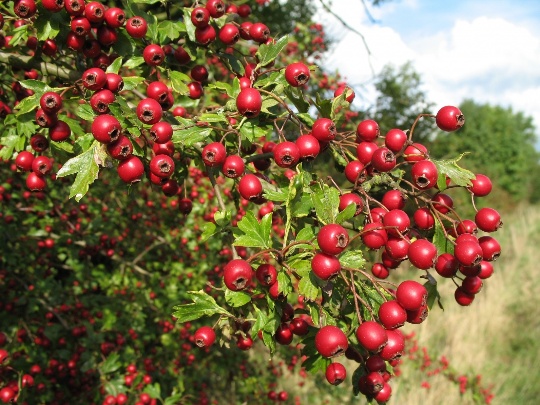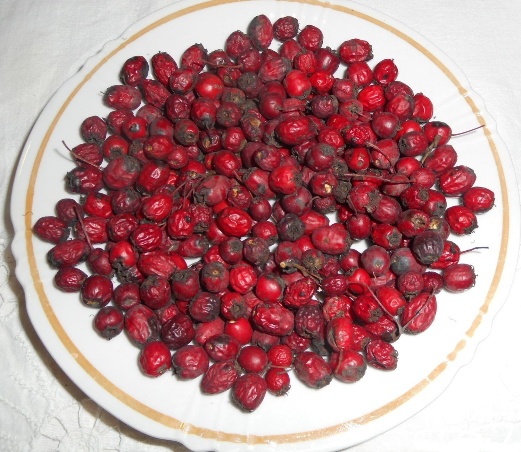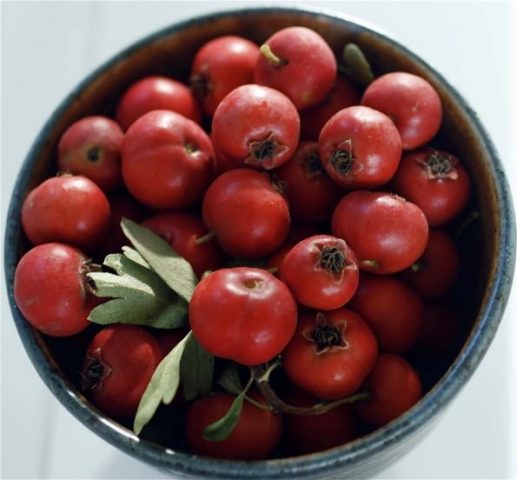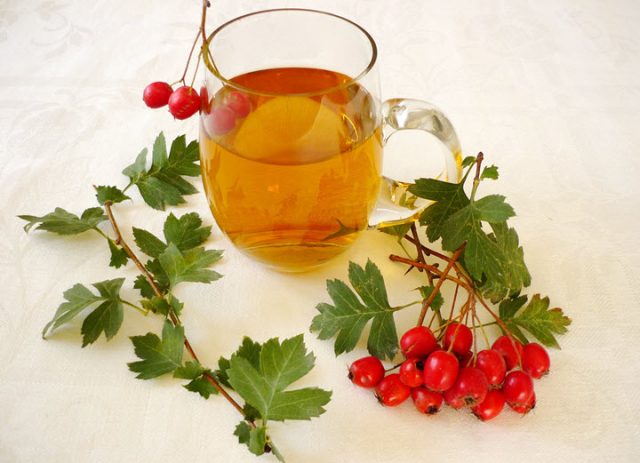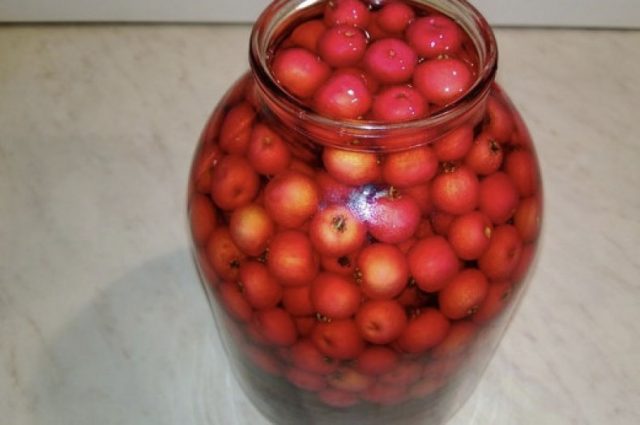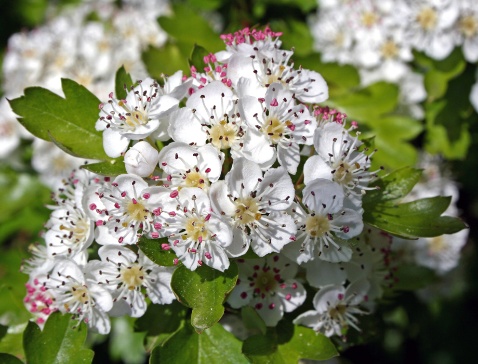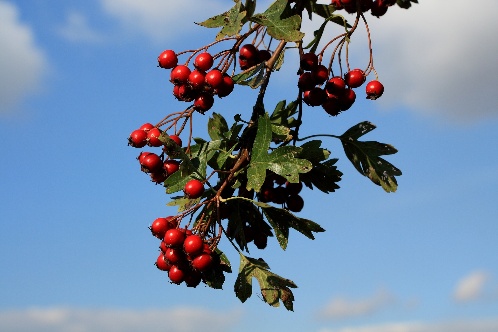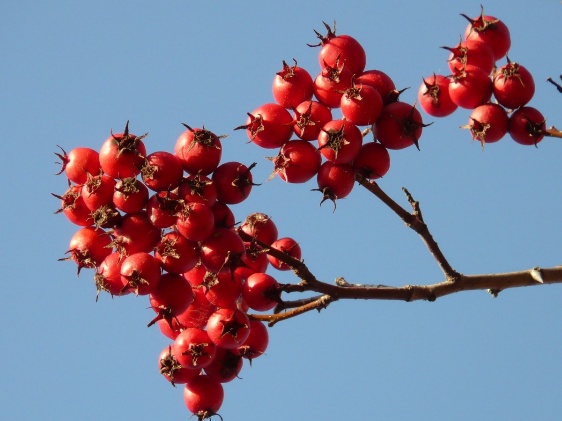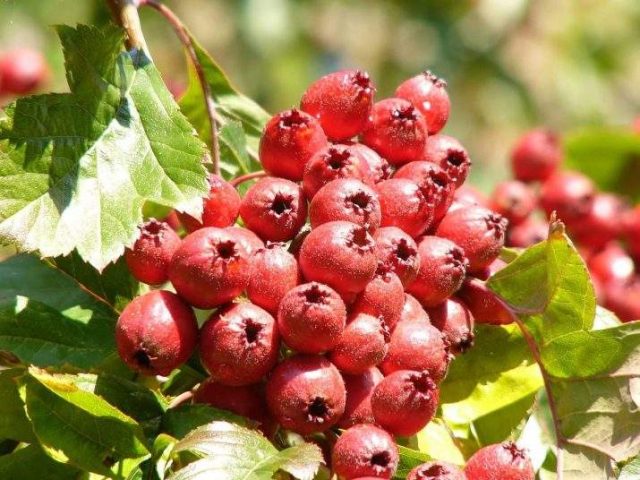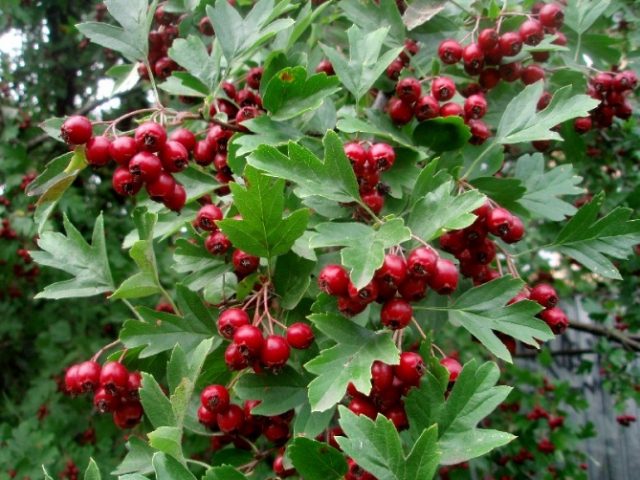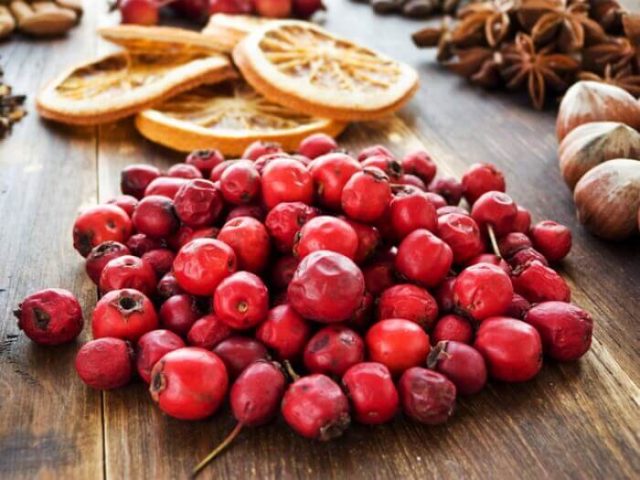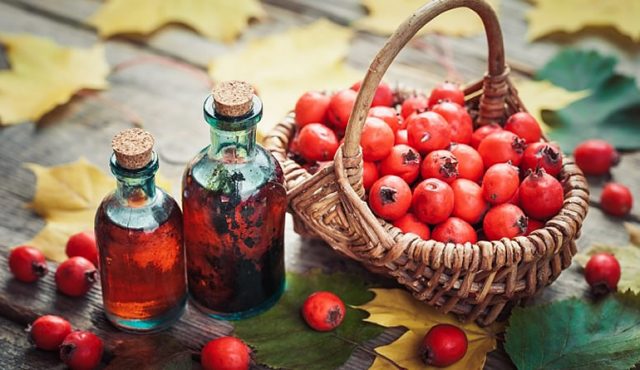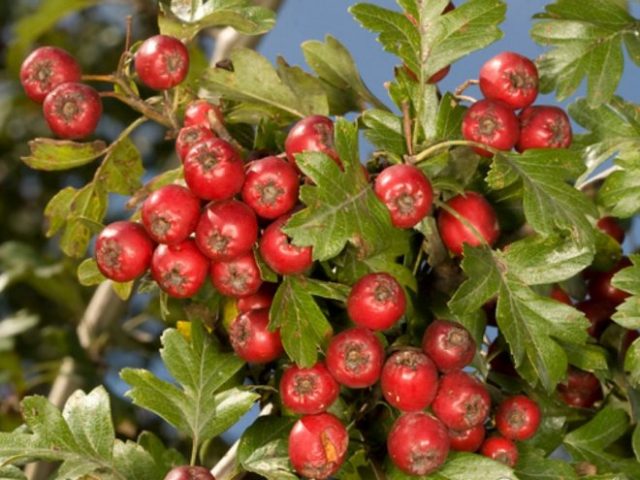Content
- 1 What hawthorn is considered medicinal
- 2 Healing properties and contraindications of hawthorn
- 3 Why are hawthorn berries useful for the human body?
- 4 What does hawthorn help from?
- 4.1 Benefits of hawthorn for the heart
- 4.2 With atherosclerosis of blood vessels
- 4.3 After a stroke
- 4.4 With hypertension
- 4.5 For cholesterol
- 4.6 With diabetes mellitus
- 4.7 With pancreatitis
- 4.8 Benefits for the liver
- 4.9 With gallstone disease
- 4.10 With gastritis with high acidity
- 4.11 With oncology
- 4.12 For colds
- 4.13 With kidney disease
- 4.14 With menopause
- 5 Why hawthorn is useful: effects on the body
- 6 Application of hawthorn
- 7 How is hawthorn used in cosmetology
- 8 Hawthorn honey: beneficial properties and contraindications
- 9 Contraindications to taking hawthorn
- 10 Conclusion
Hawthorn, the beneficial properties and contraindications of which are confirmed by official medicine, has been known as medicinal since the 16th century. Its beneficial properties were appreciated, but used only for stomach problems: dysentery and diarrhea. With the development of medicine, when it became possible to diagnose many internal diseases, it turned out that this shrub is beneficial for many other problems.
What hawthorn is considered medicinal
In nature, there are 380 "wild" species of hawthorn. Nobody considered various forms and hybrids at all. But only some types of hawthorn have medicinal properties:
- daurian (Crataegus dahurica);
- green-fruited (Crataegus chlorocarpa);
- monopest (Crataegus monogyna);
- common / prickly (Crataegus laevigata);
- five-pistil (Crataeguspentagyna);
- blood red (Crataegussanguinea);
- some other types.
These are the most common varieties used in medicine. The whole shrub has beneficial properties: roots, leaves, flowers and fruits.
In fact, this is not a pome crop, but a stone fruit culture.
There are few vitamins in fruits. Hawthorn berries have beneficial properties for the human body due to other substances:
- flavonoids:
- quercitrin;
- hyperoside;
- acetylvitexin;
- quercetin;
- vitexin;
- hydroxycinnamic acids:
- chlorogenic;
- coffee.
Treatment with hawthorn is possible only if you use it as an auxiliary, not the main remedy.
Healing properties and contraindications of hawthorn
The most widespread, accessible and numerous type of medicinal plant: red hawthorn. When they talk about the beneficial properties of these plants, they most often mean the medicinal properties and contraindications of the red hawthorn.
Therefore, when taking the preparations of this plant, you must also take into account the type of shrub or tree. In many ways, the useful properties of drugs depend on the chemical composition of the feedstock.Since the plants are unpretentious and can grow on different soils, the chemical composition will vary. The chemical compositions of different species of this genus also differ from each other. Therefore, we can only talk about a certain average value, which cannot be taken as a guide to action when self-collecting raw materials from wild bushes.
Hawthorn composition
The beneficial properties and use of hawthorn in modern medicine is explained by the high content of potassium in berries, which has a beneficial effect on CVS. But besides potassium, barbed with thorns contains a lot of other macro- and microelements. 100 g of raw materials contain:
- 1310 mg potassium;
- 300 mg calcium;
- 100 mg manganese;
- 4 mg of iron and magnesium;
- 1180 mcg selenium;
- 200 mcg boron;
- 37 mcg cobalt;
- 29 mcg copper;
- 10 mcg nickel;
- 7 mcg zinc;
- 6 mcg of strontium and iodine;
- 5 mcg of lead;
- 1 mcg chromium.
Hawthorn fruits are also used for osteoporosis. It is impossible to cure this disease. Its development is only stopped. A large amount of calcium in berries delays the development of the disease.
In addition to various elements, berries also contain other substances:
- tanning;
- essential oils;
- organic acids:
- oleic;
- coffee;
- lemon;
- tartaric;
- phytosterols;
- carotenoids;
- glycosides;
- pectins.
Because of this composition, fruits may not be beneficial to everyone. The vitamin composition of hawthorn can bring both benefits and harm to health.
The content of vitamins in hawthorn
The amount of vitamins in leaves and flowers is usually not checked, and we are always talking about fruits. The vitamin composition of the berries is scarce. 100 g of fruits contain:
- 2 mg vitamin E;
- 60 mg vitamin C;
- 16 mg vitamin A.
In winter, these are the most important vitamins for the human body, but hawthorn fruits are more useful due to the above-mentioned mineral composition.
The absolute values of the numbers are not very informative. If you count as a percentage of the daily requirement for vitamins for the human body, then the picture will turn out to be not so rosy:
- vitamin A - 259%;
- vitamin C - 100%;
- vitmine E - 13.3%.
Vitamin A has a cumulative effect. It accumulates in the liver, gradually destroying the organ. An overdose of vitamin C for a long time, if you stop using it, will lead to hypovitaminosis C. And only vitamin E can withstand the dose, taking into account the fact that it is also in other products.
Calorie content of fresh hawthorn
The main component of fresh fruits, like any other fruit, is water. Its share in 100 g of the product is 82.4 g. Proteins 0.8 g, carbohydrates 14 g, fats 0 g, fiber 1.6 g. Nutritional value of 100 g is only 58.5 kcal. But it is not recommended to use fruits for weight loss. Berries have a useful property to reduce blood pressure, which is undesirable in this situation, and harmful - to poison the body when consumed in large doses.
The healing properties of hawthorn
In official medicine, hawthorn preparations are intended for the treatment of the heart and blood vessels. They increase the contraction of the heart muscle, but reduce its excitability. Thanks to triterpenic acids, tincture and extracts from the bush improve blood circulation, eliminate pain in the heart area. Hawthorn berries are useful for the body and for other diseases:
- hypertension;
- headaches;
- allergies;
- diabetes mellitus;
- disorders of the thyroid gland;
- epilepsy.
They help to restore the normal functioning of the body during menopause. Although menopause cannot be considered a disease with a strict approach, it does not make it easier for women.
Why are hawthorn berries useful for the human body?
Due to the beneficial property of influencing blood vessels, berries are useful not only for diseases. With the improvement of blood circulation, the state of the body is automatically normalized. In this regard, the fruits are beneficial for men and women and in other areas.
Hawthorn: useful properties and contraindications for men
The hawthorn is not able to solve men's problems "on its own".It is prescribed as an adjunct to the list of other medicines. Only in the very early stages of an erection, when the problem is associated with poor blood supply to the organs, the hawthorn preparation can help without other medications.
Very often impotence occurs against the background of psychological stress. By calming the nervous system, the medicine restores potency. Also, problems with erection occur when blood stagnates in the groin area. By improving blood circulation, hawthorn medications eliminate this stagnation.
Hawthorn: useful properties and contraindications for women
The main benefit for women here is to calm the nervous system. If valerian requires long-term use before acting, and motherwort puts it to sleep, then hawthorn quickly calms the nervous system. With soreness during menstruation, it is also a good pain reliever.
Is it possible to hawthorn during pregnancy
The main contraindication in pregnancy: self-administration of the drug. Before use, you need to consult a doctor. If the doctor has allowed that the medicine will normalize the digestive tract, eliminate nervousness, raise immunity and bring the heart rate back to normal.
Is it possible to breastfeed hawthorn
A healthy organism does not need any outside therapeutic adjustments. Too early use of medicinal products leads to an incorrect formation of the body's reactions. The baby's intestines are underdeveloped and lack the necessary bacteria. Getting into the child's body through the mother's milk, instead of benefit, the hawthorn will do harm. It will interfere with the formation of normal microflora and lead to problems with the gastrointestinal tract. Before using such a folk remedy, you need to consult a doctor.
Contraindications to taking hawthorn for women
Given the original use of this plant back in the Middle Ages, it is better not to use it in the last stages of pregnancy. Constipation at this time is useless. It is also undesirable to use drugs during menstruation for those women who already have a very abundant discharge of blood. Hawthorn improves blood flow not only in the brain.
Is it possible for hawthorn for children
Like any medicine, hawthorn cannot be used "for prevention." It is also impossible to follow the principle "it's just grass that can happen." A lot can happen. The average children in the body do not yet have those pathologies that require intervention. If the child has a serious illness, the doctor will prescribe the medicine.
The benefits of hawthorn for the elderly
Preparations from this bush are used for so many diseases that they begin to seem like a panacea for all ills. In fact, the beneficial properties of this plant "revolve" around the work of the cardiovascular system and the gastrointestinal tract. Moreover, in the latter case, the indications for use are very narrow - diarrhea. It will not work to cure a stomach ulcer with the help of hawthorn.
But it will turn out:
- normalize the work of the heart;
- improve cerebral circulation;
- reduce pressure;
- remove heart rhythm failures;
- get rid of headaches.
Constipation is common in older people. When using hawthorn, it is necessary to ensure that the normalization of the work of the CVS does not overlap with constipation. Otherwise, instead of benefit, the person will receive an additional problem.
What does hawthorn help from?
"In proud loneliness" these medicines help according to the medieval principle "either he will recover, or everything is in the hands of God." It will be better if the doctor prescribes the drug as an adjuvant in combination with other medicines. But hawthorn tinctures and extracts are prescribed for many diseases. Since this berry grows freely in nature, you can use useful recipes and make your own preparations from hawthorn.
Benefits of hawthorn for the heart
This is the main application of B. vulgaris in modern official medicine.Drugs for the treatment of the cardiovascular system are obtained from common hawthorn (prickly). For the manufacture of medicines, berries and flowers that have just begun to bloom are used.
Drugs are prescribed for almost all diseases associated with CVS:
- myasthenia gravis;
- atrial fibrillation;
- angioneuroses;
- paroxysmal tachycardia;
- angina pectoris;
- hyperthyroidism with tachycardia;
These drugs are also a good way to fight insomnia caused by nervous excitement. But they must be used according to the doctor's prescription.
With atherosclerosis of blood vessels
It is impossible to count on the cure of atherosclerosis exclusively with the help of hawthorn. Preparations from this plant cannot remove plaque from the walls of blood vessels. With atherosclerosis of blood vessels, hawthorn is used for other purposes:
- lowering blood pressure;
- improved sleep;
- stimulating the heart muscle;
- reduction of dizziness due to insufficient blood supply to the brain;
- improved blood circulation;
- reduction of shortness of breath.
With atherosclerosis, constant intake of drugs from hawthorn is indicated. But the pharmaceutical preparation is alcohol tincture. Regular intake of alcoholic drugs leads to alcoholism, no matter how ridiculous it may seem. The tincture must be alternated with decoctions. There is also a delicious recipe for winter use: 800 g of granulated sugar is thoroughly mixed with 20 g of citric acid, after which it is ground with 1 kg of fresh berries of large-fruited hawthorn. The resulting mass is transferred to jars and sprinkled with sugar on top. A circle of paper dipped in alcohol is placed on top of the sugar. Jars are closed with lids and stored in the refrigerator.
The drug is ready without alcohol. Can be used daily instead of jam, but no more than 150 g and no longer than 21 days. Then they take a break.
After a stroke
Hawthorn after a stroke is of little help. Medicines from this plant are used to prevent strokes. This happens due to the same improvement in the blood supply to the vessels in the brain.
With hypertension
In hypertension, hawthorn plays its main role as a medicinal plant. He is able to relieve pressure. This is the case when it can be appointed as the main, and not an auxiliary tool. But only at the initial stage. You need to take it under the supervision of a doctor.
For cholesterol
Don't kid yourself. Hawthorn does not save you from cholesterol. Cold, hunger and movement help here, when the body uses all the nutrients it receives to a drop. He simply has nothing to put aside. Neither the subcutaneous fat layer nor the walls of blood vessels. But the preparations from this plant are able to improve blood flow through the vessels laid down by cholesterol plaques.
With diabetes mellitus
In type 2 diabetes mellitus, hawthorn is most often consumed with berries:
- fresh;
- frozen;
- dried.
Flowers and leaves of the plant are also used. Reception of berries alone can be alternated with decoctions and infusions. The action of hawthorn is limited by its beneficial properties. It can improve blood circulation and relieve pain cramps. It also improves the condition of the skin. Helps fight painful fatigue. But he is unable to replace specialized drugs.
Otherwise, instead of the expected benefit, the person will receive harm in the form of severe colic.
Such a beneficial property of the shrub as the ability to stop diarrhea can play a cruel joke. In diabetics, bowel dysfunction often manifests itself in the form of constipation. Taking medications for this disease requires stricter medical supervision than any other.
With pancreatitis
Pancreatitis is an inflammation of the pancreas. All parts of the plant have more or less pronounced anti-inflammatory properties. Best used for pancreatitis is hawthorn root.This part has the strongest anti-inflammatory effect: 100 g of the root are poured into liters of water and boiled for 10 minutes. Cool and filter. Take 1 tbsp. l 3 times a day.
Benefits for the liver
For the liver, hawthorn is more harmful than beneficial. Like any drug, the plant is poisonous in large doses. And all toxins from the human body are excreted through the liver. But with inflammation of the gallbladder adjacent to the liver, hawthorn can relieve inflammation in the same way as with pancreatitis.
With gallstone disease
The case when you do not need to self-medicate. Hawthorn with gallstone disease can be very dangerous. The plant is able to increase the secretion of bile by flushing sand from the gallbladder. But if there is too large a stone in the bladder, it will get stuck in the bile duct. This will lead to a deterioration in the patient's condition. Therefore, with gallstone disease, the intake of hawthorn is possible only after passing the examination and under the supervision of a doctor.
With gastritis with high acidity
It is often pointed out that hawthorn is useful for gastritis with high or low acidity, but no one says exactly how it affects the stomach. One and the same medication cannot either increase or decrease acidity, depending on the needs of the patient. This means that either in this case the medicine does not work at all, or it only hurts. The maximum benefit for gastritis is pain relief.
With oncology
Even doctors have not yet figured out the mechanism of the onset of cancer. With IV degree of cancer, it is already possible to be treated with anything, just as it is. In folk medicine, hawthorn is used in oncology as an antioxidant agent. It is believed to resist tumor growth. But tumor growth is much more successful with chemotherapy and radiation. The latter resist so successfully that the tumor shrinks, and doctors are able to remove it completely.
But hawthorn preparations can also be taken. The main thing is not to get poisoned with them.
For colds
Hawthorn for colds is used by supporters of traditional medicine. An abundant warm drink for this disease is useful in any case, even if it is plain water. But you can make a vitamin drink by taking a glass of rose hips, viburnum and hawthorn and 3 liters of water. Pour boiling water over the berries and leave for 24 hours. The dose is 2 days and is calculated for an adult.
With kidney disease
For kidney disease, hawthorn is an almost irrelevant medicinal plant. It has a weak diuretic effect, but not all kidney diseases show increased urination. And the very concept of "kidney disease" is too broad to be applied without a first visit to the doctor.
With menopause
Hot flashes with menopause is a failure in the thermoregulation of the body. The woman feels a burning sensation in the upper body. The scalp and chest turn red. There is increased sweating and dizziness, shortness of breath, a feeling of causeless anxiety. All this is the result of hormonal disruption, which entails the excitement of the central nervous system. The benefit of hawthorn with menopause from hot flashes is only in the fact that the medication is able to bring the central nervous system to a normal state.
Why hawthorn is useful: effects on the body
Although the beneficial properties of hawthorn are fully recognized by official medicine, its benefits do not go beyond 3 of the 4 main body systems: cardiovascular system, gastrointestinal tract and central nervous system. It is somewhat rash to perceive the plant as a panacea and consider that it can be beneficial, even if it is used just like that, "for prevention".
Hawthorn thickens or thinns the blood
The ability of medicines made from this plant to lower blood pressure shows that one of the beneficial properties of hawthorn is blood thinning. If you add alcohol, then the tincture can further expand the vessels.
Hawthorn weakens or strengthens
This useful property has been known since the Middle Ages, when decoctions and berries were used to stop diarrhea in dysentery. Today, the use of the shrub in this regard has somewhat decreased, but its infusions and fresh fruits are still used in our time for diarrhea.
Is there a hawthorn diet
Not. And such a diet is generally not recommended, since the harm from it is greater than the benefit. Hawthorn for weight loss is not used at all, even taking into account its low calorie content. With its mild diuretic effect, the only case when it can be used for weight loss is edematous "fullness". But with such "completeness", one should not hope for the beneficial properties of plants, but go to the doctor. Serious heart problems are possible.
The benefits of hawthorn for the body's immunity
Immunity in everyday life is raised with shock doses of vitamins, which hawthorn cannot boast of. Therefore, its usefulness in restoring immunity is doubtful, but the harm with excessive use is indisputable. Better to replace it with rose hips. Rosehip decoction will bring much more benefit.
Application of hawthorn
Hawthorn is used to make:
- tinctures;
- decoctions;
- jam;
- damp (fresh berries pureed with sugar);
- liqueurs.
But self-medication with these goodies is undesirable.
How much hawthorn can you eat per day
There are recommendations for the use of no more than 150 g of berries per day. But even this dose can bring harm rather than benefit. In any case, the use of a glass of fruits during the day at night can already cause pronounced symptoms of poisoning.
Many people are frivolous about the medicinal plants recognized by official medicine, believing that since it is not "chemistry", then it cannot harm. At the same time, forgetting that the use of 1-2 drops of foxglove tincture normalizes the work of the heart, and the whole bottle is fatal. Hawthorn is weaker, but it can also seriously harm.
The use of hawthorn fruit in traditional medicine
In folk medicine, berries are used even where they do not need to be used at all. In particular, as the prevention of gastrointestinal diseases in children. Meanwhile, the regular use of drugs weakens the body and, conversely, leads to the appearance of diseases. The video just shows the belief of an admirer of traditional medicine that berries should be taken both with a rapid heartbeat and with a slowdown. But it doesn't work that way.
How is hawthorn used in cosmetology
The only area where the beneficial properties of the plant can be used without a doctor's supervision. Hawthorn is used in the form of masks from berries and decoctions. Relieves irritation, removes red spots and disinfects the skin. Here, the benefits of the plant are much more than harm.
Hawthorn honey: beneficial properties and contraindications
The plant is a bad honey plant. Also, bees get little pollen from it. It is technically impossible to find pure hawthorn honey. The guaranteed beneficial properties of hawthorn honey are the same as any other natural variety of this product: the main thing is a natural antibiotic. Everything else is very selective and in too small doses to really benefit the human body.
Contraindications are the same as for other varieties of honey:
- allergy to beekeeping products;
- some stages of diabetes;
- emphysema;
- bronchial asthma;
- heart failure;
- airway hemorrhages;
- myocarditis;
- other contraindications.
The miraculousness of honey is often greatly exaggerated indeed.
Contraindications to taking hawthorn
The situation is the same as with all medications: there are no poisons and no drugs, there is a dose. So it is here. The use of the shrub for treatment can be beneficial if consumed wisely and in the right doses. And it can be harmful if you overdo it.
In small doses, hawthorn drugs can regulate tachycardia, in large doses they will cause it.Instead of being beneficial, this plant is harmful for certain diseases of the stomach and gallbladder. It is not suitable for people suffering from constipation.
The herbal component in dietary supplements is often an overdose that causes poisoning. Folk recipes: 1 tbsp. l. in a glass of boiling water - they also offer poison. The norm will be 1 teaspoon. And in all cases, taking the drug should not last more than 21 days.
Eating fresh berries in overdose causes food poisoning and severe pain in the gastrointestinal tract. In order for the hawthorn to be beneficial instead of harm, it cannot be assigned to itself. It should be used only on the recommendation of a doctor and under his supervision.
How does hawthorn allergy manifest?
This plant may also be allergic. Her symptoms:
- itching on the lips and in the mouth;
- swelling;
- nausea;
- diarrhea (the main problem that hawthorn should eliminate);
- colic;
- "Causeless" runny nose or cough.
And here it is urgent to remove the patient from this drug, and not rely on traditional medicine.
Conclusion
Hawthorn, the useful properties and contraindications of which are as extensive as any "chemical" medicine, remains an important auxiliary component in the treatment of CVS. If you do not abuse these herbal medicines, then they will only benefit. But it is important to know when to stop.
